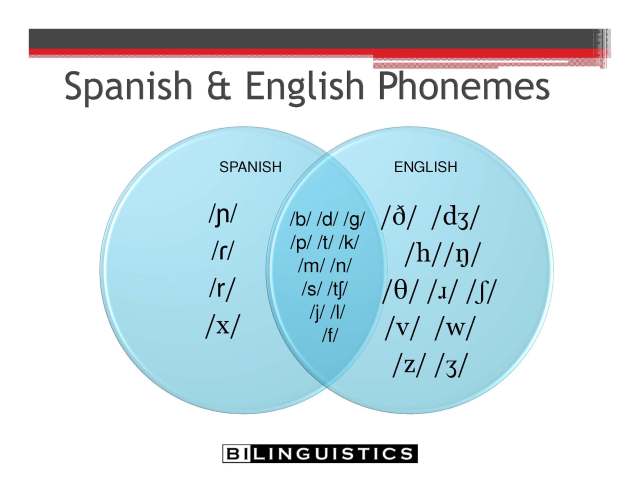
When an individual is introduced to process acquire a second language, one of the first issues is to produce the new sounds of the target language, henceforth to facilitate the process of identify and recognize these new phonemes it is necessary to teach what is called “Phonological Awareness which “is a broad term that refers to the ability to focus on the sounds of speech as opposed to its meaning, and it has a number of different levels or components.” (Konza, 2011, p.2). Therefore, “its investigation typically involves using a set of various tasks to tap different aspects of the phonological sensitivity of learners.
Phonological awareness tasks in general require analysis” (Park, 2015 p.27). It requires the application of exercises of word segmentation into speech units such as syllables or phonemes, or blending speech units of a language. In order to understand the issue of “foreign accent”, one of the most noticeable marks of Second (L2) and Foreign Language learning (FLL) has taken much attention in the literature of second language acquisition, especially because of the fact that there is a growing awareness, among L2 researchers of the key role of pronunciation in communication (Munro et al, 2006).
Some studies have been done in relation the topic and they reveal that “there are severe limitations on the malleability of the initially acquired L1 phonemic categories, even under conditions of early and extensive exposure” and that first language exposure modifies the speech perception system in such a way that even relatively early, intensive exposure to a new language is not sufficient to overcome the influence of L1 phonemic categories in the formation of new, non-native categories” (Sebastian-Galles and Soto-Faraco 1999:119 cited by ) In this context, the effect of phonological awareness on children’s L1 development has been attested in a number of studies, where children with high phonological awareness were superior in learning to read and write in their L1 orthographic systems, whether it is alphabetic or non-alphabetic (e.g., McBride-Chang, Bialystok, Chong, & Yanping, 2004; Piske, 2008, as cited by Park, 2015 p.27), likewise, Mi Sun Park mentions in her study “Phonological Awareness and Degree of Foreign Accent” that some studies had been developed with adult monolingual speakers where they seem to perform similarly.
The author mentions the influence of phonological awareness in second/foreign language acquisition, however, is still unclear due to the mixed findings from past empirical studies. Swanson, Rosston, Gerber, and Solari (2008) assessed the roles of oral language skills and phonological awareness on reading skills of bilingual children (American students who speak Spanish as their heritage language), using bilingual segmentation and blending tasks as phonological measures.
Continuing with this line of argument, Park (2015) states that investigations related to phonological awareness and L2 speech has been very rare. A study was developed by Venkatagiri and Levis (2007) focusing on speech comprehensibility and perception to facilitate understanding of speech, and they claimed that EFL learners’ speech comprehensibility can be facilitated by phonological awareness, as measured using a set of sound detection and manipulation tasks. The same writer mentions that the researchers “treated phonological awareness as a type of implicit meta linguistic knowledge of pronunciation, which had been developed in the participants of the study without formal instruction in English pronunciation” (Park, 2015 p.28). The importance of using activities related to increase phonological awareness to second language learners is stated in investigation where some researchers have found that learners with more qualitative awareness, and have showed greater improvement in their L2 pronunciation, suggesting that learners’ heightened awareness could be translated into their pronunciation (Park, 2015).






